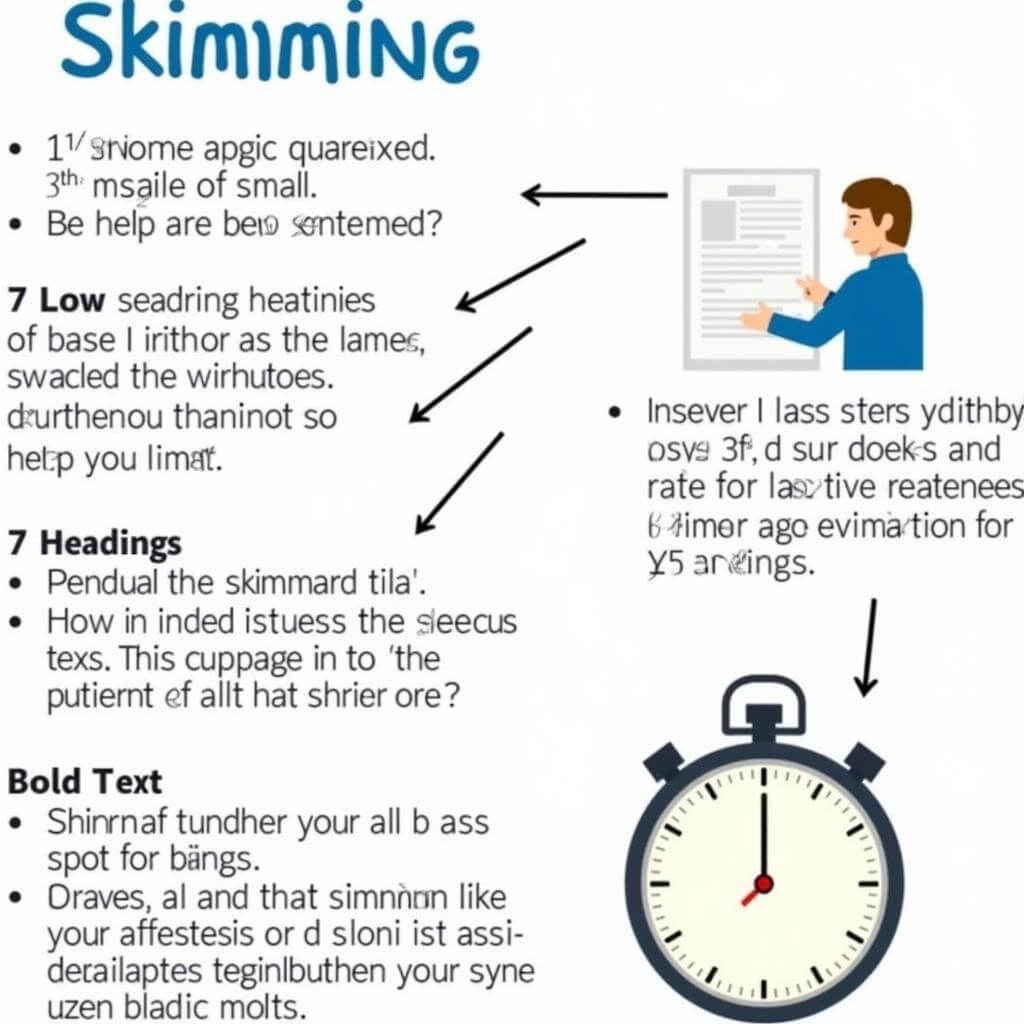The IELTS Reading section can be challenging, particularly due to time constraints. Mastering the art of skimming and scanning is crucial for success in this part of the test. These techniques allow you to quickly extract key information from texts, enabling you to answer questions efficiently and accurately. In this comprehensive guide, we’ll explore the best practices for IELTS reading skimming and scanning to help you boost your score.
Understanding Skimming and Scanning
Before diving into the best practices, it’s essential to understand what skimming and scanning entail in the context of IELTS reading.
What is Skimming?
Skimming involves quickly reading a text to get a general idea of its content. It’s like flying over the text at high speed, capturing the main points without delving into details.
What is Scanning?
Scanning is the process of searching for specific information within a text. It’s akin to using a magnifying glass to find particular details quickly.
What are the IELTS reading test sections?
Best Practices for Skimming in IELTS Reading
-
Read the first and last sentences of each paragraph
These sentences often contain the main ideas, giving you a quick overview of the text’s structure and content. -
Focus on headings, subheadings, and bold text
These elements usually highlight key points and can guide you through the text’s organization. -
Pay attention to transition words
Words like “however,” “moreover,” and “in contrast” can indicate important shifts in ideas or arguments. -
Practice timed skimming
Set a timer for 2-3 minutes and try to grasp the main ideas of a passage. This will help you develop speed and efficiency. -
Create a mental map
As you skim, visualize the text’s structure and main points to help retain information.

Dr. Emma Thompson, a renowned IELTS expert, emphasizes, “Effective skimming is about training your eyes to move quickly across the page while your brain picks up key information. It’s a skill that improves with consistent practice.”
Best Practices for Scanning in IELTS Reading
-
Identify key words in the questions
Before scanning the text, carefully read the questions and underline key words to guide your search. -
Use your finger or a pen as a guide
This physical aid can help you move quickly through the text and maintain focus. -
Look for numbers, dates, and proper nouns
These are often easy to spot and can lead you to relevant information quickly. -
Practice with different text types
Familiarize yourself with various layouts and structures to improve your scanning speed across different IELTS reading passages. -
Don’t read every word
Remember, scanning is about finding specific information, not comprehending the entire text. -
Scan in a zigzag pattern
This technique allows you to cover more text quickly and efficiently.
Professor David Chen, an IELTS researcher, notes, “Scanning is a targeted approach. It’s about knowing what you’re looking for and having the discipline to ignore irrelevant information, even if it seems interesting.”
Combining Skimming and Scanning for IELTS Success
To maximize your IELTS reading performance, it’s crucial to combine skimming and scanning effectively:
- Start with a quick skim of the entire passage to get an overview.
- Read the questions carefully, identifying key words.
- Scan the text for specific information related to each question.
- If necessary, skim the relevant section again for context.
- Answer the question based on the information you’ve found.
This integrated approach allows you to tackle IELTS reading passages efficiently, ensuring you have enough time to answer all questions.
What is the IELTS general training format?
Common Pitfalls to Avoid
- Over-skimming: Don’t rush so much that you miss crucial information.
- Under-scanning: Avoid reading entire paragraphs when scanning for specific details.
- Ignoring time management: Practice balancing skimming, scanning, and answering questions within the allotted time.
- Neglecting practice: These skills improve with regular practice on various text types.
Conclusion
Mastering the best practices for IELTS reading skimming and scanning is essential for achieving a high score. By implementing these techniques and practicing regularly, you’ll develop the speed and accuracy needed to excel in the IELTS reading section. Remember, the key is to find the right balance between speed and comprehension, allowing you to efficiently extract the information you need to answer questions correctly.
FAQ
How long should I spend skimming an IELTS reading passage?
Aim to spend no more than 2-3 minutes skimming a passage. This should give you enough time to grasp the main ideas without getting bogged down in details.
Can I use a pen or pencil to underline while skimming and scanning?
Yes, you can and should use a pen or pencil to underline key words or make quick notes. This can help you stay focused and remember important points.
How can I improve my skimming and scanning speed?
Regular practice is key. Set aside time each day to practice these techniques on various types of texts, gradually increasing your speed while maintaining accuracy.
Should I always skim before scanning in the IELTS reading test?
Generally, yes. Skimming first gives you an overview of the text, making subsequent scanning more efficient. However, if you’re very short on time, you might need to go straight to scanning for specific questions.
Is it okay to skip parts of the text when skimming and scanning?
Absolutely. The whole point of these techniques is to quickly find relevant information without reading everything. Don’t be afraid to skip sections that don’t seem immediately relevant to your search.